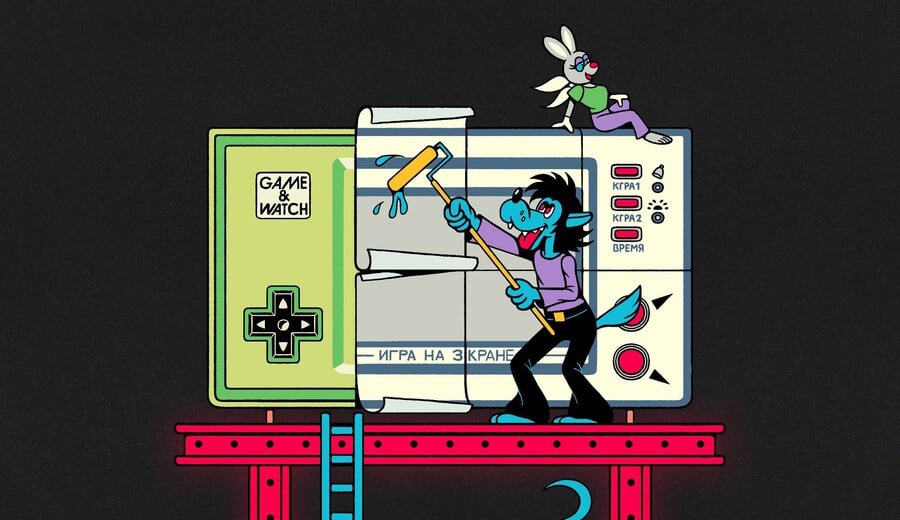
Gunpei Yokoi, who designed the original Game & Watch, once said: "The Nintendo way of adapting technology is not to look for the state of the art but to utilise mature technology that can be mass-produced cheaply."
It was this design philosophy which also made the devices so easy to bootleg. The boom in the digital calculator market had started a manufacturing race between companies like Casio and Sharp, and Elektronika in the USSR, and as a result, the necessary semiconductors and liquid crystal displays were already in abundant supply.
Elektronika’s Game & Watch clones featured a single LCD screen, often with static game architecture printed onto the glass. They had four or six controller buttons, a built-in clock display, and usually played one game each. The brain powering these devices was the KB1013VK1-2 microprocessor: a Soviet-made clone of the Sharp SM-5A inside each of Nintendo’s Game & Watch handhelds.
One of the first Soviet releases was the Elektronika 24-01 Igra Na Ekrane (Game on Screen). Launched in 1984, it was a direct clone of the 1981 Nintendo Game & Watch MC-25 Mickey Mouse — in which players move Mickey between four different positions, catching falling eggs in his basket while Minnie waves from a window above.

The Soviet version had the same chunky build as Nintendo’s model and an identical button layout. However, while Nintendo’s device utilised a widescreen format, the Elektronika did not. Also, in the top left corner, where the original device had featured the Game & Watch logo and Nintendo brand name, Elektronika’s version had only blank space; while naturally all text on the Soviet copy appeared written in Cyrillic.
Nintendo also produced a version of this game that didn’t feature the Disney brand but instead, a wolf catching eggs, which was also released in 1981 as the Game & Watch EG-26 Egg. When the Soviets duplicated this one, they replaced Nintendo’s wolf with a slightly different character: the wolf from the popular Soviet cartoon Nu, Pogodi! (Well, Just You Wait!).
The result, the Elektronika IM-02 — now featuring a uniquely Soviet character on the screen — sold millions of units, becoming one of Elektronika’s most popular releases and an icon of Soviet youth culture. A popular rumour at the time had it that if you reached a score of 1,000 points on Nu, Pogodi!, the handheld’s LCD screen would play a full episode of the cartoon. It would have been a technical impossibility of course, but that didn’t stop the story from spreading like wildfire through Soviet-era playgrounds.
This piece is an excerpt from the upcoming A Handheld History: 1988-1995. You can pre-order a copy here.
